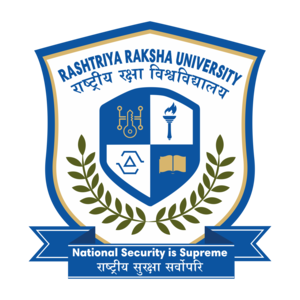
Is Our Health Predicament Control Mechanism Well-equipped To Confront Covid-19?
Is Our Health Predicament Control Mechanism Well-equipped To Confront Covid-19?
- Rituraj Bhowal
The distinction between past, present and future is only a stubbornly persistent illusion.
These words of Albert Einstein are apropos in present situation where an infinitesimal element traumatized the entire Globe as the same was already predicted in 1980s. In the month of December, 2019 pneumonia of an unknown cause detected in Wuhan, China which later announced by World Health Organization to be Corona Virus Disease (Covid-19) having international health concern. It is evident that most of the efficient health mechanisms of developed countries failed to normalize the out-break of Covid-19 which questions the ability of their respective legal framework to tackle pandemic like this. In the subsequent text Indian legal skeleton to counter Covid-19 will be scrutinized.
Constitutional Framework
Being union of twenty-nine states and eight union territories, Indian Constitution bifurcates legislative responsibilities between the central government and the states. Legislating on public health crisis management is cup of tea of both Union and States. The Union may deal with port quarantine, interstate migration and quarantine, seamen’s and marine hospitals under entries 28 and 81 of List I of Seventh Schedule read with Article 246. State may legislate for matters relating to public health and sanitation, hospitals, and dispensaries under entry 6 of List II. That apart central government and state laws may concurrently provide for the prevention of inter-state transmission of infectious or contagious diseases.
Union Laws
Talking about laws preventing a pandemic like this, India has Epidemic Disease Act, 1897 which was brought in force to tackle plague in Bombay. The Act of 1897 aimed to provide for prevention of the spread of dangerous epidemic diseases. For which State governments under Section 2 may adopt any measure or prescribe temporary regulation to prevent out-break, if the govt deems existing law to be inefficient. Similarly, Section 3 empowers the central government to take measures and prescribe regulations for inspecting ship or vessel at any port and for the detention of persons arriving or intending to sail. That apart, by virtue of Section 4 any person who disobeys any order aforementioned, may be charged with an offense under section 188 of the Indian Penal Code. Section 5 provides immunity from legal proceedings to any person or authority for anything done under this Act.
Indian Aircraft (Public Health) Rules, 1954 made under Aircraft Act, 1934 gives power to central government to prevent spread of disease. A health officer appointed by the central government is posted at the port of entry from abroad and such officer may grant critique to the vessel or aircraft for landing. He may also inspect the aircraft, its passengers, crew, and subject them to medical examinations. The officer may require any person to be removed to a hospital and quarantined for a period, if needed and may prohibit embarkation on any aircraft or vessel of any person.
The Disaster Management Act, 2005 was legislated to establish a legal framework for the effective management of disasters and other incidental matters. This Act tries to provide legal definition of a few terminologies which helps the Central Government to take necessary steps in cases of exigencies, e.g., ‘disaster’, ‘disaster management’ etc. The definition of disaster is wide enough for a layman of ordinary prudence to equate the Covid-19 pandemic as disaster but it does not talk about epidemic or pandemic. Furthermore, the Act portrays disaster management as a continuous and integrated process of initiating measures to control dilemma and also to reconstruct damage caused by disaster. That apart, the Act establishes three-tier Disaster Management Authority and Disaster Response Fund at National, State and District level to mitigate the disaster. The most relevant provision in this pandemic era would be Chapter IX which authorizes National Executive Committee and National Disaster Management Authority to make emergency procurement for rational purposes. Section 51 imposes sanction of imprisonment of one year with/without fine for violations of order and of two years in case of causing loss of lives. Considering the importance of uniform public health law, Central Government assigned various agencies to draft public health bill. Till date 3 drafts are placed before Parliament in 1987, 2002 and 2009 respectively. Among these the National Health Bill of 2009 framed by Ministry of Health and Family Welfare Task Force is most comprehensive one aimed to protect and fulfil rights in relation to health, health equity and justice. Afterwards, Ministry of Health and Family Welfare produced a bill namely, Public Health (Prevention, Control and Management of Epidemics, Bio-terrorism and Disasters) Bill 2017. This bill is aimed to prevent, control and manage epidemics, public health consequences of disasters, bio-terrorism etc. by way of giving extensive powers mainly to state government to counter the dilemma. Central Government may also render necessary directions to State or Union Territories and if the Central Government deems it expedient to do so, it may assume the powers of State Government.
Apart from these there are incidental legislations which indirectly brings focus on health crisis management. These are Indian Penal Code, 1860 (s. 188, 269, 270, 271) Red Cross Society Act, 1920, Guidelines on Biological Disasters, 2008 (in cases of bio-war), National Disaster Management Plan, 2019 and many more.
State Laws
Not only Central Govt. various states legislated public health laws within their ambit. For the first time Madras Public Health Act was promulgated in 1939. Till now there are more than 8 states having public health law/bills in place. It is interesting that Kerala has two sets of public health laws viz., Travancore-Cochin Public Health Act, 1955 (for southern districts) and Malabar Public Health Act, 1939 (for northern districts). These state laws are inefficacious in want of uniform legislation although priorities of states differ.
International Obligations
International Health Regulations, 2007, emphasized on the obligations of the member states and WHO as well for securing global health security. By virtue of Articles 5, 6 & 7 countries along with India have agreed to build their capacities to detect, assess and report public health events that could pose a threat to international public health. The Biological and Toxin Weapons Convention(BTWC), 1975, obligates signatories not to develop, stockpile any biological weapons which is likely to be used for hostile purposes. That apart, Union of India is a signatory of various treaties which incidentally focuses on right to health, viz, Article 25 of UDHR, Article 12 of ICESCR, Article 24 of CRC and Article 12 of CEDAW. It is evident here that Central Govt. has power to honor its international obligations under Article 253 and 51(c) of Constitution of India.
Summing Up
Despite plethora of legislations there are a few lacunas in public health crisis management of India. those are:
➢At the present context India lacks a public health law with a right based approach which will ensure human rights principles importantly, right to confidentiality, information disclosure and rational health care etc. and will also provide for efficacious surveillance mechanism & training module for health workers.
➢Disputes redressal mechanism is one the suitable facet to gain trust of the people in health mechanisms which none of the existing laws of our nation portrays. Though Supreme Court in a PIL (Shashank Deo Sudhi v. Union of India) gave several guidelines to government to tackle Covid-19, this process is not amicable and impracticable for all to avail.
➢Provisions imposing punishment in the existing laws for violating regulations of government need to be revised as the sanction is too nominal that neither it can create trepidation nor can guarantee justice to sufferer.
➢The Act of 2005 is the only statute which gives multi-dimensional strategy to handle pre-disaster and post disaster situations. It definitely has the capacity to tackle the dilemmas caused by natural intervention but unfortunately in case countering a contagious disease like Covid’19, it also has some drawbacks.
➢The need of the hour is an inter-ministerial board comprising the Ministries of women and child development, rural and urban development, industry, food and agriculture, finance, information & broadcasting, science & technology and most importantly Ministry of Health and family Welfare having supremacy over all ministries, to tackle such pandemic.
Solutions to these problems can be found in Bills of 2009 and 2017 but unfortunately these are engulfed by the debate of Pith and substance between Centre and State. It would be fallacious to characterize Indian public health mechanism as deplorable, as various wings of government i.e. National Centre for Disease Control (NCDC), Indian Council of Medical Research (ICMR) and its organs like National Institute of Cholera and Enteric Diseases (NICED), National Institute of Virology (NIV), National Institute of Epidemiology (NIE) are rigorously striving to normalize the situation. At this crucial juncture all we need a non-fragile public health legislation with both coercive and right based approach which must ensure co-operation among center, state and various authorities. Because it is only the cooperation and understanding which can make the tiring efforts of health workers worthwhile and indeed, at the end of day, make us smile.
References:-
1. Constitution of India
2. Epidemic Diseases Act, 1987
3. Indian Aircraft (Public Health) Rules, 1954
4. Disaster Management Act, 2005
5. Shashank Deo Sudhiv. Union of India, Writ Petition No. 10816 of 2020
6. IHR, <https://www.who.int/ihr/about/en/> accessed 7 April 2020.
7. The National Health Bill 2009,
<http://www.indiaenvironmentportal.org.in/files/Draft_National_Bill.pdf> accessed 7 April, 2009
8. Patro BK, Tripathy JP, Kashyap R., “Epidemic diseases act 1897, India: Whether sufficient to address the current challenges?” [2013] 18 JMGIMS 109












